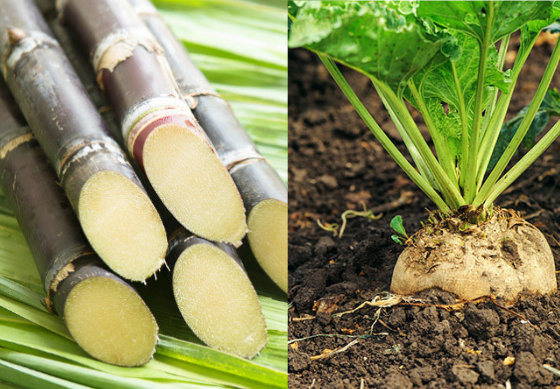The agricultural practices for beet sugar vs cane sugar contribute to differences in production scale.
The agricultural practices for beet sugar vs cane sugar contribute to differences in production scale.
Blog Article
Discover the Uses and Advantages of Beet Sugar Vs Cane Sugar in Your Daily Diet Plan
Discovering the distinctive qualities of beet and cane sugar discloses greater than just their sweetening capabilities; it highlights their special influence on health and cookeries. Beet sugar, known for its refined taste, is commonly favored in fragile treats, whereas cane sugar, with its hint of molasses, includes richness to durable recipes. Each type holds its very own dietary profile and glycemic ramifications, welcoming a deeper understanding of their functions in a well balanced diet regimen and sustainable usage techniques.
Origin and Production Procedures of Beet and Cane Sugar

The unique environments and dirt types required for growing sugar beets and sugarcane add to differences in their growing methods and geographical circulation, affecting the economics and sustainability of their production. beet sugar vs cane sugar.
Nutritional Comparison Between Beet Sugar and Cane Sugar
Regardless of stemming from different plants, beet sugar and cane sugar are nutritionally very similar, both mostly including sucrose. Each gives concerning 4 calories per gram, translating to approximately 16 calories per tsp. Structurally, both sugars are made up of about 99.95% sucrose, with marginal amounts of other compounds like dampness and trace minerals, which do not substantially modify their dietary profiles.

Ultimately, when choosing in between beet sugar and cane sugar based upon nutritional web content alone, both offer similar benefits and disadvantages as they are basically types of the exact same particle-- sucrose, giving fast power without various other nutrients.
Influence on Wellness: Glycemic Index and Caloric Material
Checking out even more into the results of beet sugar and cane sugar on wellness, it is necessary to consider their glycemic index and caloric content. Both sugars are identified as sucrose, which is composed of glucose and fructose. This composition leads them to have a comparable effect on blood sugar degrees. The glycemic index (GI) of both beet and cane sugar is around 65, classifying them as high-GI foods, which can cause fast spikes in blood sugar levels. This is a crucial facet for people managing diabetes mellitus or those attempting to maintain their power levels throughout the day.
Each sort of sugar includes about 4 calories per gram, making their calorie material matching. For those keeping an eye on calorie consumption, specifically when taking care of weight or metabolic health problems, understanding this equivalence is crucial (beet sugar vs cane sugar). However, too much consumption of any type of high-calorie, high-GI food can add to health and wellness issues such as weight problems, cardiovascular disease, and insulin resistance.
Environmental and Economic Considerations of Sugar Production
Beyond wellness influences, the production of beet and cane sugar likewise elevates significant environmental and economic problems. Sugar beet cultivation has a tendency to call for cooler climates and has a lower geographical impact compared to sugar cane, which flourishes in exotic regions. Nevertheless, both plants are extensive in terms of water usage and land line of work, possibly causing logging and water scarcity. Financially, the global sugar market is highly unstable, affected by adjustments in global trade policies and subsidies. Several countries incentivize sugar production with economic assistance, skewing market prices and impacting small farmers adversely.
Additionally, using pesticides and fertilizers in both beet and cane sugar cultivation can result in dirt destruction and air pollution, more impacting biodiversity and local water bodies (beet sugar vs cane sugar). The choice in between cultivating sugar beet or cane commonly pivots on local environmental conditions and economic factors, making the sustainability of sugar production a Continued complicated problem
Culinary Applications and Flavor Distinctions
While the ecological and financial elements of sugar production are certainly substantial, the choice in between beet and cane sugar also influences cooking applications and taste accounts. my blog Beet sugar, originated from the sugar beet plant, is known for its remarkably neutral preference. This makes it a versatile ingredient in cooking, where it does not alter the taste of other parts. It liquifies quickly and is ideal for usage in cakes, cookies, and pastries.
Cane sugar, drawn out from sugarcane, frequently preserves molasses traces, which pass on a distinct richness and depth. The minor variant in moisture web content between beet and cane sugar can influence the texture and consistency of meals, making cane sugar a preferred choice for particular dishes that profit from its unique buildings.

Final Thought
Finally, both beet and cane sugar have unique beginnings and manufacturing procedures, providing similar dietary accounts with slight differences in sodium web content and flavor. While their effect on wellness, particularly pertaining to glycemic index and calories, is comparable, the choice in between them typically comes find more information down to ecological, financial elements, and specific culinary requirements. Comprehending these elements can assist consumers in making notified decisions that line up with their health and wellness objectives and flavor preferences.
Report this page